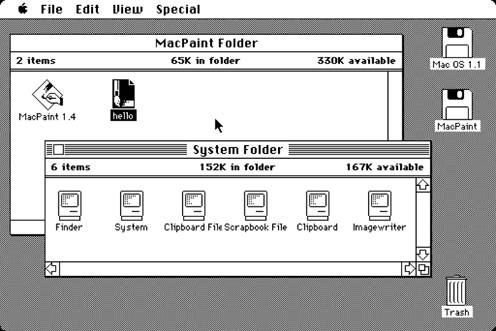Section 1.1. The Classic Mac OS
1.1. The Classic Mac OSIn 1983, after the incredible success of the original Apple II (the first true personal computer for most people) and the later relative disappointments of the Apple III and the Lisa , Steve Jobs organized a group of engineers under a pirate flag to make a computer that could be used by anybody. The result of their efforts, known as the Macintosh, was introduced to the world a year later accompanied by the fanfare of the famous "1984" commercial (directed by Ridley Scott of Alien and Blade Runner fame). With a message of empowerment, the Mac redefined what a personal computer could be. What made the Mac different from every other personal computer at the time was its graphical user interface (GUI) , inspired by research that originated at Xerox PARC : a desktop where files lived in folders, and you used a mouse to move things where you wanted them. The Mac's original desktop is shown in Figure 1-1. Figure 1-1. The original Mac OS desktop The desktop metaphor introduced with the original Mac in 1984 lives on today in the current Finder. Sure, today's desktop is rendered in full color and the original was comparatively crudely drawn in black and white, but the basic idea remains much the same: opening disks and folders yields windows that contain icons that represent files. At the heart of the system was a set of programmatic routines called the Macintosh Toolbox that allowed programmers to implement the various essential interface componentssuch as windows, menus, alert boxes, scrollbars, and other controlsin their applications. In 1984, the Toolbox was an amazing feat of engineering and contributed to a consistent user experience that was the envy of other operating system vendors. But, over the years after its release, more and more routines were added to the Toolbox as the system developed. This resulted in more features, but those features came with a pricethe system became fragile. |
EAN: 2147483647
Pages: 166